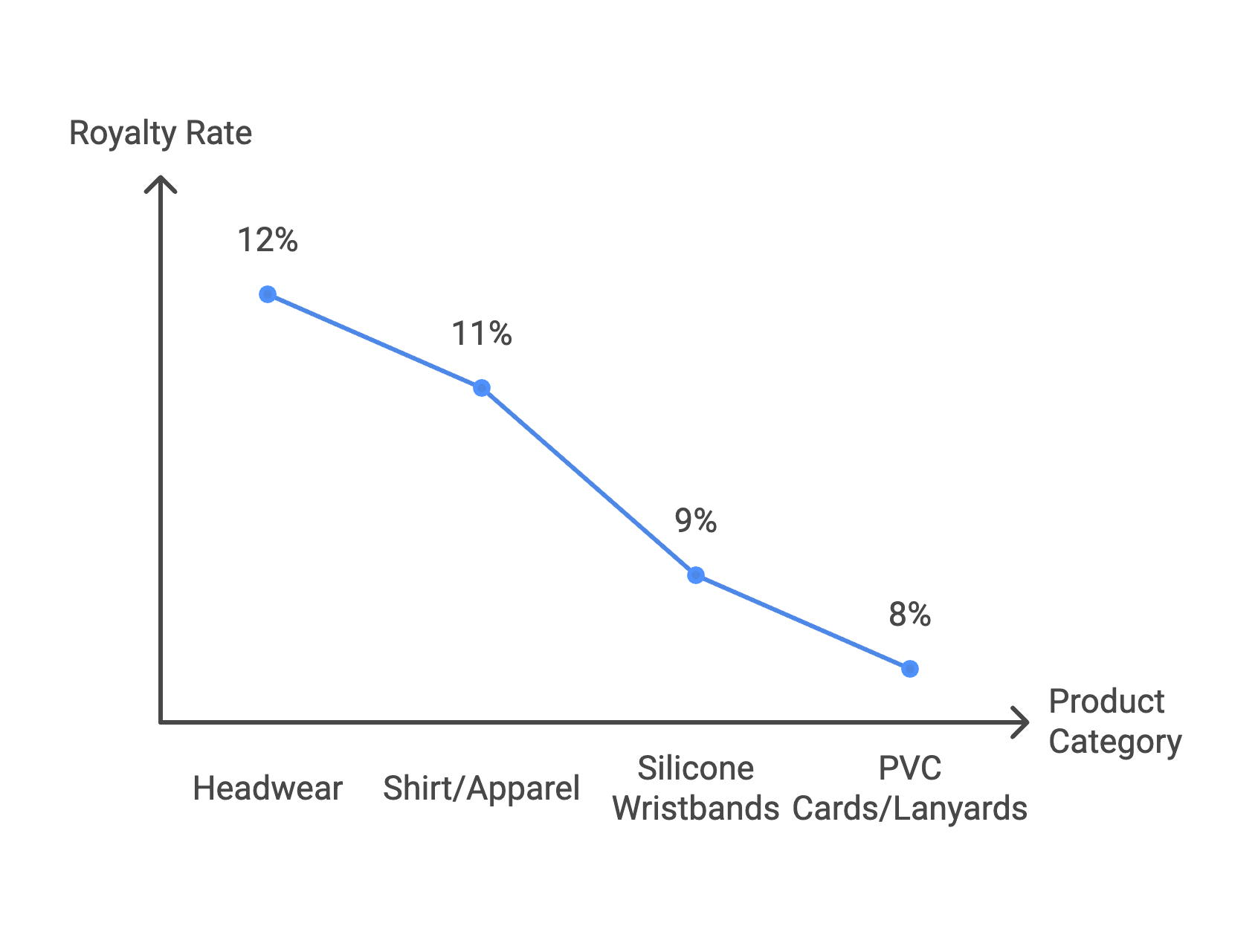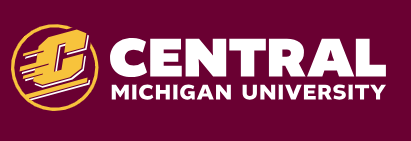University Trademark and Procurement Compliance Guide
Navigating university procurement for branded merchandise requires a sophisticated understanding of trademark compliance, intellectual property rights, and the new frontiers of Name, Image, and Likeness (NIL) regulations.
The stakes have never been higher for university procurement officers, marketing teams, and legal counsel. Effective management mitigates significant legal and financial risks, protects brand integrity, and unlocks substantial revenue streams.
As pressures from counterfeit goods, sustainability demands (ESG), and athlete monetization grow, a robust, data-driven compliance strategy is no longer optional. It is essential for institutional success.
Table of Contents
- Market Landscape of Collegiate Merchandising
- Trademark and Licensing Policy
- Build a Compliant Procurement Workflow
- Vendor Selection and Management
- Brand Colors, Fonts and Approved Products
- NIL Compliance Checklist
- Royalty Rates and Approval Times Estimate
- Case Studies on Centralized Licensing Portal
- Protect Brand Equity with Compliant Partnerships
Market Landscape of Collegiate Merchandising
The collegiate-licensed merchandise market is a significant component of the global licensed products industry. According to Licensing International, the global brand licensing industry generated $356.5 billion in retail sales in 2023, with sports licensing—a category encompassing collegiate sports merchandise—growing by 5.6%.
Within licensed sports merchandise, the collegiate segment is a substantial subset leveraged by over 700 colleges and universities across the United States through entities like the Collegiate Licensing Company (CLC), which manages licensing for these institutions. The CLC has been a cornerstone for collegiate brand licensing, enabling universities to protect trademarks and monetize brand equity effectively.
Moreover, the emergence of Name, Image, and Likeness (NIL) rights adds complexity and opportunity to collegiate merchandising. NCAA regulations updated in 2024 emphasize transparency and compliance in NIL activities, enabling student-athletes to co-brand merchandise with their universities, thus creating novel revenue streams and requiring sophisticated compliance management.
These factors combined demonstrate that collegiate branded merchandise continues to grow economically and strategically, requiring holistic compliance frameworks that address intellectual property, ethical sourcing, and evolving NIL compliance.
Trademark and Licensing Policy
A university's trademark and licensing policy is the foundational document governing the use of its brand. Understanding its nuances is the first step toward compliant university procurement.
These policies are designed to protect the institution's intellectual property, ensure brand consistency, and manage revenue generated from its marks. They dictate everything, from who can use the logos to the specific colors and permissible product types. This can range from apparel and customized pens to larger items for events.

Key Definitions
Navigating the policy requires fluency in its terminology. The following terms are foundational to compliant use of university branding:
- Federally registered trademarks (®): Provide the highest legal protection and enforcement level.
- Common law trademarks (™): Indicate trademark rights established through use rather than federal registration.
- Service marks (℠): Identify services (not goods) and function like trademarks for service providers.
- Spirit marks: Secondary logos, mascots, or symbols defined by the university, typically with specific usage rules.
Understanding and applying these definitions helps ensure brand-consistent, compliant use across all materials.
Typical Policy Components
Most university policies include detailed sections on usage guidelines, outlining clear dos and don'ts for logo placement, size, and alteration.
Royalty brackets define the percentage of wholesale cost that must be remitted to the university, often varying by product category and sales channel. The policy will detail the product review cycles and approval workflows that all vendors and internal departments must follow before producing any item.
A university's trademark policy isn't just a rulebook. It's a strategic tool designed to protect institutional IP, ensure brand consistency, and manage the significant revenue generated from its official marks.
Build a Compliant Procurement Workflow

A standardized, transparent procurement workflow is the engine of a successful branded merchandise program
According to E&I Cooperative Services, "The procurement model has not changed significantly in recent memory, yet the landscape has changed dramatically."
This systematic approach minimizes errors, reduces approval delays, and provides a clear audit trail for financial reconciliation.
Step 1 - Pre-Requisition Checklist
Before any vendor is contacted, internal due diligence is critical. The first step is budget alignment, confirming that funds are available and allocated for the specific project. Next, secure all necessary stakeholder sign-offs.
A simple request for department t-shirts or custom koozies might require approval from the department head, the central marketing office, the licensing director, and occasionally, the legal department.
Step 2 - Vendor Vetting
Only licensed vendors should be used for products featuring university trademarks. The primary step is to verify a vendor's status through the university's approved licensee databases, typically managed by agencies like CLC, Affinity Licensing, or Learfield.
Beyond licensing, proper vetting includes requesting and verifying current certificates of insurance and social-compliance attestations, such as WRAP certification, which confirm ethical manufacturing practices.
Step 3 - Product Submission
Once a vendor is selected, they will submit digital proofs of the product design for approval. This is a critical checkpoint. The design must be reviewed against brand standards for correct logo usage, color accuracy, and placement.
Be mindful of timelines; typical approval windows range from 10 to 15 business days. Rushed orders often lead to compliance mistakes, so planning is essential. Fast-track proofs with vector logos and official color codes. This eliminates guesswork and reduces revision cycles.
Step 4 - Payment Audits
The final stage involves managing the financial components. The vendor's invoice should clearly separate product costs from the royalty amount due to the university. The licensee is responsible for remitting this royalty directly to the university or its licensing agent.
Internal departments should maintain records of all purchases for post-purchase audits, which the licensing office periodically conducts to ensure all royalties have been accurately reported and paid.
Rushed orders are a primary cause of compliance mistakes. Proper planning is essential, as typical approval windows for digital proofs can range from 10 to 15 business days. Avoid last-minute requests.
Vendor Selection and Management
Choosing the right partner is paramount for successful university procurement of branded merchandise. Vendors in this space are not interchangeable; they fall into distinct categories, each with its own approval process.
- Licensed Vendor: A company with a formal, long-term agreement to produce and sell items with the university's marks.
- Internal Licensees: On-campus entities like the university press or print shop, with standing permission for internal orders.
- One-time Approvals: May be granted for a specific, unique item from a non-licensed vendor, but this is rare.
Working exclusively with established, fully-licensed vendors is the most efficient and compliant path for consistent programs.
Evaluation Matrix for Licensed Vendors
When comparing approved licensees, use a structured matrix to make an objective decision based on key performance indicators
| Criteria | Description | |
 |
Price | Unit cost, bulk discounts, setup fees, and shipping. |
 |
Turnaround Time | Quoting speed, production time, and shipping logistics. |
 |
Compliance Record | History with the university's licensing agent; low rate of rejected proofs. |
 |
Sustainability | Availability of eco-friendly materials and ethical sourcing certifications (e.g., WRAP). |
Brand Colors, Fonts and Approved Products
Adherence to brand standards is non-negotiable in trademark compliance. These guidelines are the rulebook for maintaining a consistent and professional institutional identity.
The most critical element is color. This means vendors must be capable of exact Pantone (PMS) matching for print and physical goods, and provide correct HEX conversions for digital use.
Brand guides also dictate which product categories are permissible. While standard items like apparel, novelty items like bulk custom tote bags, and tech accessories are widely approved, there is almost always a list of banned items.
This list commonly includes products associated with safety risks or reputational harm, such as weapons, alcohol and tobacco paraphernalia, and certain types of glassware. Always consult the university's specific brand standards guide before developing a product concept.
NIL Compliance Checklist
The emergence of Name, Image, and Likeness (NIL) has introduced a transformative layer to university trademark compliance. Governed by a patchwork of NCAA regulations and varying state laws, NIL allows student-athletes to be compensated for using their personal brand.
NCAA updated NIL (Name, Image, and Likeness) compliance rules emphasize voluntary disclosure for student-athlete NIL activities, linking this with the provision of permissible institutional assistance. Failure to comply with disclosure and consent can risk student-athlete eligibility and expose institutions to legal challenges.
Recommended NIL Compliance Checklist:
- Verify athlete NIL disclosures and reporting before approval
- Secure executed NIL consent and licensing agreements for each athlete
- Confirm valid business purpose for co-branded NIL merchandise (per NCAA)
- Separate and calculate revenue shares for the university and the athletes
- Meet NCAA and state reporting deadlines (annual reports, transparency)
- Obtain legal and licensing sign-off on all athlete-involved designs
- Track and archive consents, contracts, and royalty/payment records
- Coordinate with the NIL compliance office and CSC for oversight and disputes
- Educate vendors and internal teams on evolving NIL rules and restrictions
This detailed process safeguards the student-athlete’s eligibility and protects the university and licensing partners from legal and financial liability in the rapidly evolving NIL landscape.
Sustainability and Ethical Sourcing
Sustainability is a critical procurement factor. Higher Education Institutions (HEIs) are embedding sustainability practices throughout procurement to reduce carbon footprints and align with carbon reduction commitments such as the UN Sustainable Development Goals.
For instance, the University of Edinburgh reported that more than 50% of its greenhouse gas emissions stem from supply chains, prompting enhanced supplier sustainability criteria.
Royalty Rates and Approval Times Estimate

Setting expectations around royalty rates, approval timelines, order minimums, and compliance considerations is essential for smooth collaboration when managing branded merchandise licensing. Royalty rates for university-branded merchandise are typically around 12%, depending on product category.
While exact terms vary by contract and institution, the following table presents an approximate guideline of average royalty percentages, approval windows, typical minimum order quantities (MOQs), and key compliance notes for common product types.
These estimates are intended to provide a foundational reference frame for planning and negotiation, but should be validated against specific licensing agreements.
| Product Type | Avg. Royalty % (2024) | Avg. Approval Window | Typical MOQ | Compliance Notes |
| Headwear | 12% | 12 business days | 72 | Embroidery digitizing is required, adding a step to the proofing process. |
| T-Shirt/Apparel | 11% | 10 business days | 144 | High resale velocity; requires careful brand placement. |
| Silicone Wristbands | 9% | 7 business days | 300 | Fast custom turnaround; ideal for events and awareness campaigns. |
| PVC Cards/Lanyards | 8% | 8 business days | 250 | Ideal for events, IDs, and access control; data privacy considerations for a custom ID card. |
These figures align with typical royalty and production timelines observed in collegiate and promotional product licensing environments, as reflected indirectly through CLC's licensing framework and industry norms.
However, due to the bespoke nature of licensing agreements, royalty rates and operational lead times can vary significantly depending on the product category, licensing entity, and market conditions. Therefore, these estimates should be a guiding reference rather than definitive contract terms.
Careful brand management, compliance with data privacy standards, and procedural steps such as digitizing artwork for embroidery can influence approval periods and order minimums.
Licensing professionals should always consult their specific licensing partner or legal counsel for confirmed rates and operational details to ensure contractual compliance and successful merchandise rollout.
Case Studies on Centralized Licensing Portal
In 2023, the University of Oregon significantly streamlined its trademark licensing and internal procurement process by implementing a centralized digital system managed through its Office of Marketing & Brand Management.
This platform facilitates internal departments' submission of artwork and product designs, selection from a vetted roster of over 250 licensed vendors, and digitally managing the approval workflow in real time.
Key highlights of this centralized approach include:
Trademark Licensing Control
All merchandise bearing University marks, including apparel, promotional products, and employee gear, must be produced by officially licensed vendors under formal Trademark Licensing Agreements. This program is governed strictly to preserve brand integrity and protect trademark rights under Oregon state statute and federal law. |
Digital Artwork Submission and Approval
Vendors submit digital proofs of proposed products via an online approval system managed by UO Branding and Trademark Licensing. The streamlined digital workflow ensures adherence to brand standards—including approved uses of the Oregon “O” logo and color specifications—and reduces errors associated with non-compliant designs. |
Improved Turnaround Time
Following the portal's introduction, the University reported a 35% reduction in average approval times within the first year. This accelerated timeline benefits internal departments and vendors by shortening product development cycles and minimizing last-minute compliance issues. |
Compliance and Audit Readiness
Maintaining all vendor licensing records, product proofs, and royalty payment documentation centrally enables easier auditing and enforcement of licensing agreements for revenue protection. Schedule periodic internal audits with exception alerts and dashboard reporting to quickly spot gaps and enforce compliance. |
Proactive Vendor Management
The portal restricts merchandise procurement to the approved list of licensed vendors contractually bound to meet quality, ethical, and compliance standards. This selective licensing strengthens the University’s ability to protect brand equity through consistent product quality and legal oversight. This integrated, data-driven licensing portal represents a best-practice model in university brand management. It balances speed, compliance, and revenue protection while empowering campus units with transparent branding resources. |
Protect Brand Equity with Compliant Partnerships
Mastering university trademark and procurement compliance is a strategic advantage. It transforms a potentially chaotic process into a streamlined system that accelerates speed-to-shelf, maximizes royalty upside, and most importantly, protects the institution's invaluable brand equity.
By implementing a transparent workflow, leveraging data, and partnering with vetted, compliant vendors, you can ensure every piece of branded merchandise strengthens your university's identity and mission.
References
- NCSA College Recruiting. (2025, August 22). What is NIL? NCAA Name, Image, Likeness Rule Explained. https://www.ncsasports.org/name-image-likeness
- Use environmental, social and governance (ESG) practices in your business | business.gov.au. (n.d.). business.gov.au. https://business.gov.au/environmental-management/use-environmental-social-and-governance-esg-practices-in-your-business
- Licensing International Releases Executive Summary of 2024 Global Licensing Industry Study - Licensing International. (2024, May 22). Licensing International. https://licensinginternational.org/news/licensing-international-releases-executive-summary-of-2024-global-licensing-industry-study/
- Collegiate Licensing - Campus Services - University of Richmond. (n.d.). Campusservices. https://campusservices.richmond.edu/licensing/
- NCAA.org. (2024, January 10). Division I Council approves NIL disclosure and transparency rules. NCAA.org. https://www.ncaa.org/news/2024/1/10/media-center-division-i-council-approves-nil-disclosure-and-transparency-rules.aspx
- What is a trademark? (2023, November 30). USPTO. https://www.uspto.gov/trademarks/basics/what-trademark
- Hopkins, H. (2024, December 17). Spirit Marks. https://brand.augusta.edu/spirit-marks/
- Spirit Marks | University Communications. (n.d.). Central Michigan University. https://www.cmich.edu/offices-departments/university-communications/brand-guidelines/signature-marks/spirit-marks
- Prajapati, R., & Prajapati, R. (2023, December 12). Procurement Sourcing Trends to help higher education leaders excel in today’s market. E&I Cooperative Services. https://www.eandi.org/resources/ei-blog/procurement-sourcing-trends-higher-education/
- Worldwide Responsible Accredited Production. (2025, June 12). Certification explained - WRAP Compliance. WRAP Compliance. https://wrapcompliance.org/en/certification/certification-explained/
- Colors. (2024, July 8). University Relations and Marketing. https://communications.oregonstate.edu/brand-guide/visual-identity/colors
- HEX to Pantone (PMS) Color converter. (n.d.). DNS Checker. https://dnschecker.org/convert-hex-to-pantone-pms.php
- Student-Athlete NIL deals. (n.d.). https://www.collegesportscommission.org/nil/
- Martin. (2025, August 12). The Sustainable Development Goals - United Nations Sustainable Development. United Nations Sustainable Development. https://www.un.org/sustainabledevelopment/development-goals/
- University trademark and licensing policy. (n.d.). University Communications. https://communications.uoregon.edu/uo-brand/trademarks
- Licensing | University Communications. (n.d.). https://communications.uoregon.edu/trademark-licensing/licensing






